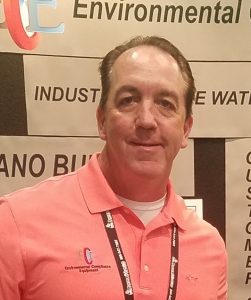Chemical waste that has been improperly managed may contaminate water streams. This type of industrial water pollution, which comes with many causes, has both significant and harmful impacts on human and aquatic life. Environmental Compliance Equipment’s (ECE) CLEAR FLOW SYSTEM is designed to treat contaminated water. The Clear Flow system is a fully automated wastewater treatment process utilizing a bentonite based and polymer flocculent to remove solids, oils, inks, paint, dyes, metals, BOD and COD.
“Chemical Waste” is a term that includes dangerous chemical by-products from manufacturing operations and laboratories, as well as smaller scale chemicals discharged from homes and businesses. Most chemical waste can be categorized as hazardous waste depending on the disposal procedure recommended.
Here are Some Examples of Chemical Waste:
- Manufacturing or Laboratory By-Products
- Solutions and Chemicals for Film Processing
- Reagent grade chemicals
- Chemically Contaminated Objects – Syringes, Needles, Razors
- Chemical Powders
- Spent Solvents
- Fluids Including: Transmission, Radiator, Brake and Steering Fluids
- Dye
- Used oil
- Asbestos
- Sulphur
- Mercury
- Pesticides
- Gas Cylinders
- Paint
- Electronic Equipment
- Ethylene Glycol
- Fluorescent Light Bulbs
- Degreasing Solvent
- Lighting Ballasts
- Glues and Adhesives
- Resin Including: Epoxy, Styrene
- Toner / Print Cartridges
- Industrial Cleaning Materials
Household Items: - Cleaning Products
- Batteries
- Aerosol Cans
- Refrigerants
Please note that this is not a definitive list and items may be subject to change. Refer to your Material Safety Data Sheet (MSDS) for proper waste classification.
How Chemical Waste Causes Industrial Water Pollution
Runoff
The production and usage of toxic chemicals is common in manufacturing factories, industrial operations, and construction sites. The chemicals are then exposed to rainwater, causing them to be washed into the soil or directly into lakes, rivers or streams. This is among the biggest causes of industrial water pollution.
Groundwater Contamination
This is water that is located below the Earth’s surface and cannot be seen unless you dig deep enough. Pollutants flow over land and quickly contaminates the water beneath the ground. This groundwater eventually finds its way into rivers, lakes and other valuable water sources.
Illegal Dumping
Waste from homes or industries that has been illegally dumped can cause a serious amount of pollution. This typically happens in places near a water source where people may think the pollution will eventually be washed away, but in reality it has negative consequences for the water source.
Sewerage and Septic Systems
These systems are often not given proper maintenance on a regular basis, which may lead to accidents such as leakage into water supplies. When human waste contaminates a water supply, it can cause dangerous bacteria to spread.
Spills and Leaks
One of the causes of chemical leaks and spills is human error and negligence. Spills and leaks can rapidly make their way to water streams if not taken care of.
Outdated Technology
This is often due to the high cost of newer systems. Modern technologies are not cheap to implement, so most industries forgo improvements and rely on outdated systems which are less advanced and can produce more pollutants.
Lack of Investment
As outlined above, one of the biggest roadblocks for industries to invest in pollution control equipment, management and measures is the cost. It is usually not prioritized because of this.
Industrial Growth
One of the downsides of large-scale growth is that it often leads to disregard for pollution. Resources are focused on supporting a growing economy instead of procurement of enough chemical waste disposal sites and services.
The Damage Caused by Chemical Waste & Pollution
The Ecosystem
When important water resources get contaminated with polluted water, it becomes unsuitable for consumption and other relevant uses. In the developed world, this is a long-lasting problem that is expensive to fix. On the other hand, this can have a detrimental impact on communities in the developing world as getting access to clean drinking water may become a problem.
Thermal Pollution
Thermal pollution occurs when harmful chemicals are deposited at the bottom of a water body. Over time, this can cause significant health risks for nearby people, animals, and marine life. This is especially bad for aquatic and marine life as they are very sensitive to the condition and temperature of water.
Increase in Nutrients
Also referred to as eutrophication, excess nutrients can speed up the growth of algae. Algae blooms reduce the oxygen levels in water and, in turn, cause large-scale algae loss. With lower oxygen levels in the water, its ability to support aquatic life is lessened.
Murky Water
Murky water prevents sunlight from reaching bottom level plants. They can also block fish gills, causing disease and death to aquatic life. Murky water is quite often a warning sign for a more serious problem and doesn’t just mean floating sediments.
Biomagnification
Biomagnification is an issue that can affect humans and other animals higher in the food chain. When the levels of toxic substances increase, it can cause a myriad of health issues that can adversely affect human life. These include headaches, nausea, genetic defects, and much more.
Ensure Safe and Compliant
Disposal of Chemical Waste
It is your responsibility to comply with unsafe chemical waste disposal procedures and avoid environmental consequences and penalties. For important matters such as this, we urge you to use qualified experts.
We're here to help!
Need More Information?
Complete the form below or call us at +1 772-600-5697 and one of our knowledgable representatives will reach out with the information you require.


